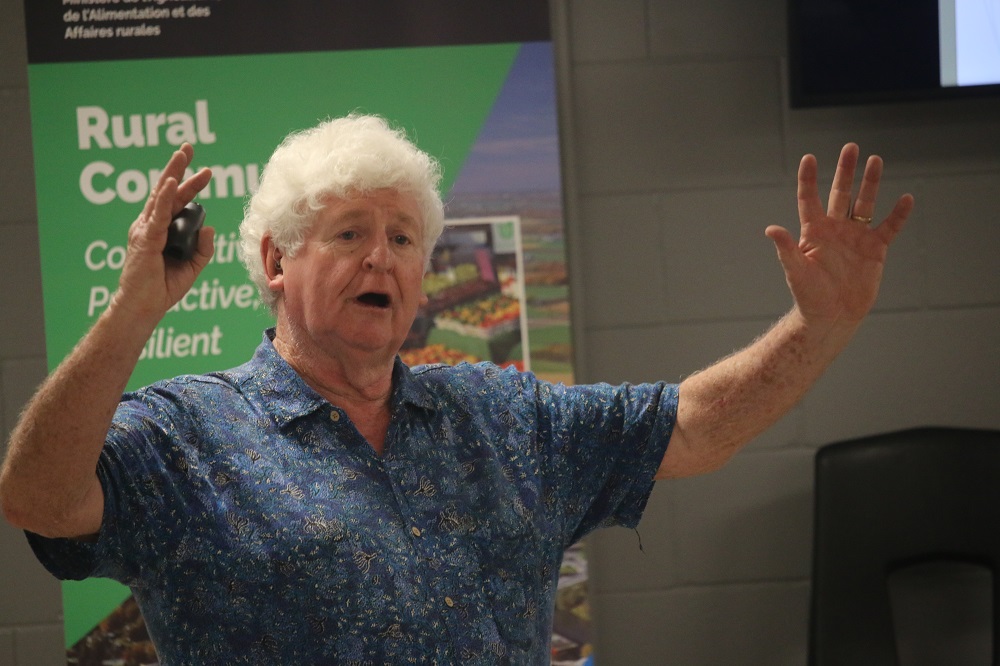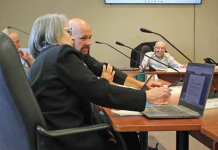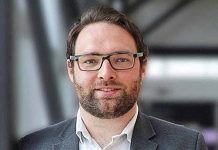Almost every problem in Haliburton County can be solved by engaging and inspiring community residents, Peter Kenyon – one of the world’s top economic development specialists – told a group of leaders in Minden June 6.
The keynote speaker at last week’s Teeny Tiny Summit at the Minden Community Centre, Kenyon has spent the past 30 years helping communities overcome issues by embracing localized ideas – first in his home of Australia, and now around the world.
“Whatever the problem – community is the answer,” Kenyon said. “The best thing about living in a small town is somebody somewhere knows the answer… Seeking out wisdom from local people is always the most important starting point, no matter what you’re doing or how clever you think you are.”
He told the story of Ernesto Sirolli, a celebrated Italian scholar and author, who, in his early career, was contracted to assist countries in east Africa to come up with ways to bolster local food supply.
Sirolli worked with people to establish a series of vegetable gardens, teaching them how to grow things such as tomatoes and greens.
“Everything was great… until 200 hippos came charging out of the Zambezi and ate all the vegetables,” Kenyon said, drawing laughter from the crowd. “Sirolli was beside himself, he asked why nobody had told him about the hippos. The people said ‘well, you never asked’.”
He referenced other success stories where communities embraced new ideas and enjoyed unparalleled success – none more than Kulin, Australia.
Wanting to stop the trend of decades of depopulation, stemming from young people leaving to pursue careers, Kulin established a plan to become “more than a dot on the map,” Kenyon said.
It started with a marquee event – the launch of the Kulin Bush Races in 1994. What started as low-level horse racing, attracting a few hundred people, has grown into one of the most popular annual events in Australia. It brings 5,000 visitors to Kulin every October, with last year’s gathering selling out in 28 seconds.
“It’s two days of partying, but people come rom all over. It’s amazing how they’ve adapted and changed things so that it appeals to all generations,” Kenyon said, noting last year’s event generated $600,000 profit, which was reinvested into the community, and about $2 million for the local economy.
In the years since, Kulin has opened a giant waterslide and waterpark, which has provided another tourism boom, and its people have rallied to open a community bank, the first of its kind in Australia, and established a community cooperative to run a pub and community centre.
“I love this little town – it’s inspiring. The population there has trebled since, while all other towns nearby have halved. There were more babies born in Kulin than any other [town] in Australia,” Kenyon said.
He shone a light on Kaikoura, a small village in New Zealand. In the 1980s, when the main railway into town closed, most of the local fisheries shut. Kenyon said about 95 per cent of the Maori villagers were fishermen.
Rather than chase new jobs out of town, the villagers came together to launch a sightseeing operation for tourists wanting to go whale watching. The founding families re-mortgaged their houses to buy a boat big enough to take eight people per trip.
Today, that operation sees around 150,000 people a year – and Kaikoura has become the top whale watching destination in the world.
“All it took was a group of people saying, ‘what do we have’ rather than focusing on what they don’t have, or what they lost, to make a difference,” Kenyon said.
He said there are seven key characteristics of a strong community: committed local leadership; active community engagement and connection; fostering a positive and cando community mindset; being obsessed about developing new assets and opportunities; developing a localized wow-factor; focusing on lifestyle for young people; and supporting entrepreneurial aspirations and initiatives.
“Leadership is not a position – it’s a set of behaviours, an attitude. It’s about making things happen,” Kenyon said. “It’s about inspiring people to come forward to enact change. It’s about future-proofing towns, making them attractive for young people, because they’re the future.”
Angelica Ingram, the County’s manager of tourism, said Kenyon’s speech provided food for thought for all 150-plus attendees.
Other presentations featured Fay Martin, from Places for People, who spoke about the organization’s fundraising initiatives and attempts to bring more affordable housing to the County; Kevin Hodgkinson from the Haliburton County Home Builders’ Association, discussed trades opportunities for young people; representatives from Point in Time promoted the Youth Wellness Hub and the difference its supports and programs have made for young people; and Patti Tallman, from Haliburton County Development Corporation, provided an update on the local initiatives program that supports economic development in the Highlands.
“The summit proved to be an exciting and inspiring day filled with forward-thinking ideas and conversations,” Ingram said. “I think everyone who attended learned even teeny tiny places such as Minden and Haliburton can achieve success if likeminded individuals work together and focus on the positive.”





